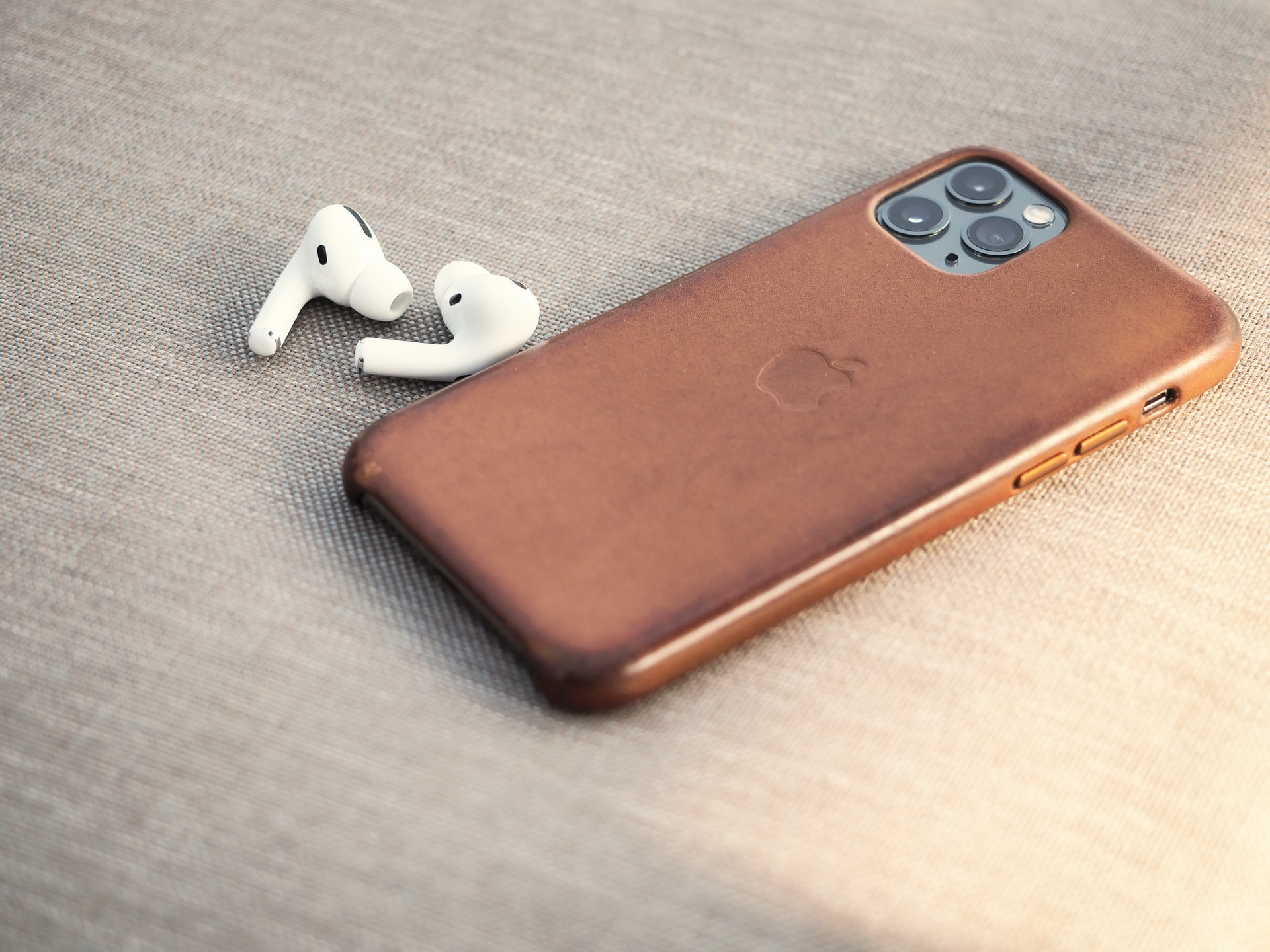Table of Contents
Most iPhone users assume that their device is completely secure. After all, Apple keeps pushing out new security updates to fix loopholes as they occur.
But just as Apple constantly updates its system, hackers also keep improving their skills. As a result, they still find it easy to hack into Apple devices.
If someone has hacked into your iPhone, you must discover and stop them quickly before they gain access to sensitive information on your phone. That’s why it’s important to know if someone is accessing your iPhone remotely.
One sure way to tell that someone is remotely accessing your phone is to find out if unfamiliar devices are linked to your Apple ID.
In this article, we’ll provide more ways to check for remote access to your iPhone. You’ll also learn how to stop the illegal access and protect your iPhone from similar occurrences in future.
What Does Remote Access to an iPhone Mean?
A person has gained remote access to an iPhone if they can view and control the activity on the phone.
This should be differentiated from parental control, which is when a parent restricts their child’s activity on an iPhone to protect them from obscene content.
Remote Access to an iPhone occurs in 3 main ways:
- The person tricks you into downloading spyware from a phishing mail.
- They hack into your iCloud account.
- The cybercriminal hacks your Apple ID through your Family Sharing.
- They link their device to your WhatsApp account.
Now, let’s discuss how to detect remote access to your iPhone.
9 Telltale Signs that Someone is Accessing Your iPhone Remotely
This section covers the signs that may indicate that someone has remote access to your iPhone.
- Unfamiliar Calls and Messages
Did you get a call or message from a contact you didn’t save? If so, it could be a sign that someone is remotely accessing your phone.
Sometimes, these messages come in the form of notifications from email newsletters you never subscribed to.
- Strange Apps
One easy way to tell that someone is remotely accessing your phone is to search for strange apps. If you find any apps you haven’t installed on your phone, someone may have hacked your phone.
The hacker may be using the apps to steal information from your phone.
- Fast Battery Drain
Another sign of remote access to your iPhone is fast battery drain. If you aren’t using a powerful app or streaming videos continuously, yet your battery keeps dying fast, someone is probably accessing your phone from another device.
Please note that poor battery health can also make your battery drain quickly. So, make sure you check your iPhone battery health before jumping to any conclusions.
- Unrecognized Devices in Your iCloud Account
Many iPhone owners store important information in their iCloud accounts. So, if someone is trying to steal your data, chances are they’ve linked their device to your iCloud account.
Sign in to your iCloud account with your Apple ID. Then, scroll down to see the Devices list.
If you notice any strange devices on the list, you should suspect remote access to your iPhone.
- Excess Data Usage
Have you recently been consuming more cellular data than usual? Then, someone may have gained authorized access to your iPhone.
- Functional Disorders
When someone is accessing your iPhone remotely, the phone may develop functional issues like:
•Frequent shutdowns
• Unresponsive apps
• Providing wrong feedback to your commands
These problems may occur because the hacker is running different processes to extract information from your personal accounts.
It’s important to note that functional issues don’t always mean that your phone is being hacked. It could also indicate that the iPhone needs repair or a software update.
- Performance Lags
If your iPhone takes too long to respond to your commands, it could indicate unauthorized access. Just like functional issues, performance lags often occur because the hacker is running intrusive processes on your device.
- Unwarranted Overheating
Sometimes, the iPhone feels hot after only using it for a few minutes. The culprit behind this issue is an overused system.
If you were performing a low-impact activity like a text when your phone heated up, someone might be accessing your phone remotely.
But if you were operating several apps at once, you are most likely responsible for the increased temperature of your phone.
- Unexplained Password Changes
The most obvious sign of unauthorized access is an unexplained password change. If you can’t log in to your social media accounts, someone has gained remote access to your phone.
How to Stop Someone from Accessing Your iPhone Remotely
Delete Unfamiliar Apps
In most cases, the hacker monitors your activity through the spyware apps on your iPhone. So, if you remove the apps from your phone, the hacker will lose access to your personal information.
Update Your iPhone
Another quick way to disable remote access to your iPhone is to update your device.
Apple frequently introduces new security upgrades that strengthen the firewall on your phone. You never know, the latest update may kick the intruder out of your system.
Remove Strange Devices from Your iCloud Account
You can also stop someone from remotely accessing your phone by removing their device from your iCloud account.
But how do you know which device is causing the havoc? That might be difficult, especially if you have many strange devices linked to your account.
What we recommend is to remove any device that looks unfamiliar to you. This should expel the stranger from your account.
Enable Two Factor Authentication
If you still suspect remote access, you’ll need to apply a final step to end all intrusion. That final step is a two-factor authentication.
A two-factor authentication is a security method that requires you to pass two stages of verification before letting you access your account. The two-factor authentication on an iCloud account involves these two stages:
- An OTP sent to your phone number.
- Your Apple ID and password.
Follow these steps to enable two-factor authentication on your iPhone:
- Tap Settings and select iCloud.
- Next, click on iCloud profile name.
- Then, tap Password & Security.
- Toggle the button beside Two-factor authentication to turn it on.
- The system will ask you to choose your country and input your phone number.
- After entering your phone number, you’ll get a message on your phone stating your OTP code.
- Enter the code on your iPhone.
- You’ll receive a notification saying that you’ve been successfully verified.
- Finally, enter your Apple ID and password.
- You have finished setting up the two-factor authentication process.
How to Protect Your iPhone from Remote Access
Avoid Clicking on Untrusted Links
As I said before, most hackers first gain remote access to iPhones through spyware. This spyware is installed on your phone when you click on spammy links in phishing emails.
If you don’t want anyone to enjoy unauthorized access to your phone, don’t click on links that come from untrusted sources.
Download Anti-Spyware Apps
Even if you don’t click on unreliable links in emails, hackers may still find a way to send spyware to your iPhone. They could redirect a link on your favorite website to their spyware. Or they could clone a popular website and fill it with spyware.
If you’ve already installed a high-quality Anti-Spyware app, the hacker’s spyware won’t work. As such, they’ll be unable to penetrate through your firewalls.
Create a More Secure Password
Stop setting your birthday date as your password. It’s super easy to guess, and it’s most probably available for public view on the internet.
If you want to protect your iPhone from remote access, you’ll have to make your Apple password stronger.
Usually a strong password contains all of the following characters:
- One or more letters
- One or more numbers
- A symbol.
Set up a Face ID
A face ID provides a higher reliability method than the other tips mentioned here. It restricts other users from accessing your phone by relying on your face as a verification code.
Take the following steps to create a face ID on your iPhone:
- Open your Settings app.
- Click on Set Up Face ID.
- A frame will appear on the screen.
- Place your head inside the frame.
- Then, move your head slowly until a full circle is drawn around the frame.
- Tap Continue.
- Then, move your head around again until another circle is drawn.
- Click on Done to complete the process.
Conclusion
If you suspect that your iPhone is subject to remote access after reading this article, fix it immediately. Also, ensure to apply the precautions we discussed here to prevent a repeat occurrence.
FAQ About Remote Access on Iphone
Can Someone Access My iPhone from Another Device?
It’s possible to access your iPhone from another device. If the person knows your Apple ID and password, they can log in to your iCloud account and control the activity on your phone.
If Someone Has My Apple ID, Can They See My Texts?
If someone has your Apple ID, they can see your texts. Knowing your Apple ID, they’ll be able to sign in to your iCloud account and view all your synced text messages. They can also see your photos, social media data, and other information you’ve synced to your device.
-Author: Saka Ozak Oreoluwa

